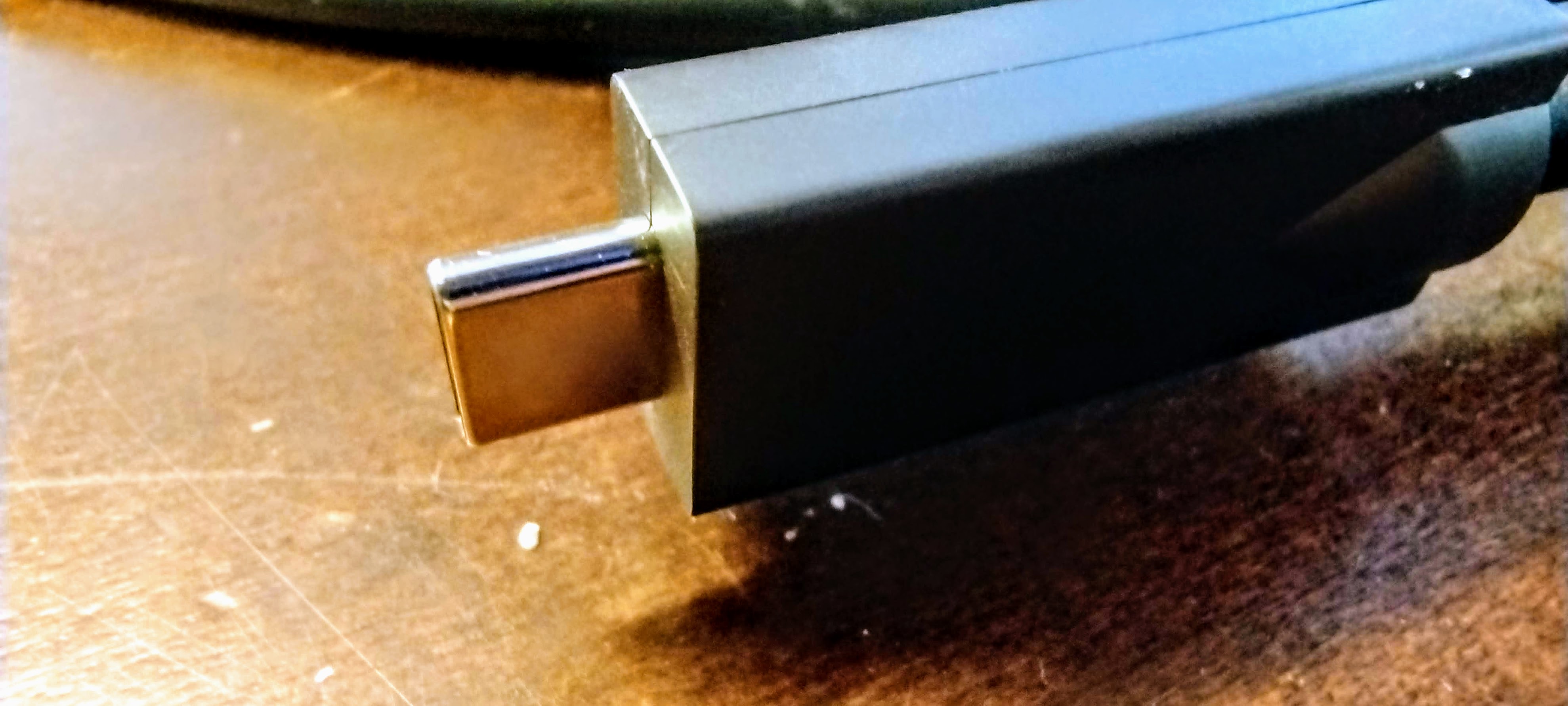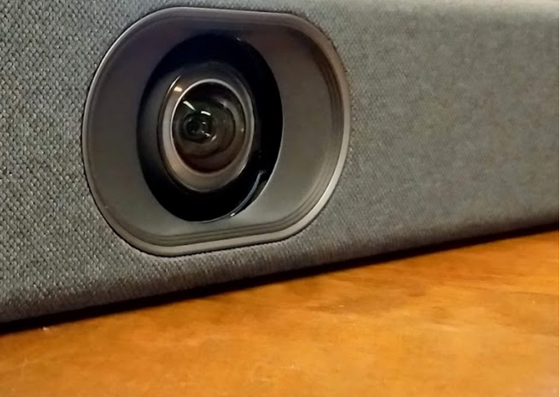👋Hello IT Manager! Do you know what 4K UHD is and why you should pay attention to it?
4K has made a big impact in our workplaces, but are your company's users and IT staff truly ready for it? Are you making the most out of the enhanced image quality?
We sat down and put together a list of questions and answers from an AV installer's perspective about the 4K format. We wrote it from the perspective that it's suitable for anyone interested in the topic. If you're already familiar with 4K UHD image format, congratulations. Hopefully, this will serve as a handy reminder. If this is a new topic for you, we hope it will be useful in developing your AV environment in the future.
What does 4K UHD mean?
4K UHD refers to high-resolution imagery that is four times more detailed than Full HD. This is achieved by adding more pixels to the screen. Typically, 4K refers to a resolution of 3840 x 2160 pixels, which is around 8.3 million pixels. In theory, this creates a sharper, more detailed image that is pleasing to the eye.
When referring to UHD, it stands for Ultra High Definition. It is a marketing term used to describe the sharpness and clarity of the screen. UHD resolution is 4K, which makes it one of the most popular display resolutions being installed. This technology has rapidly become more common in recent years, and many televisions, computer monitors, and a small number of projectors fully support this resolution.
In summary, 4K UHD is a technology that allows for high-resolution imagery to be displayed four times sharper than Full HD, which has been the standard for image resolution in the AV industry for some time. This is achieved by adding pixels to the screen, which creates a more detailed image. UHD is a marketing term that describes the sharpness and clarity of the screen, and 4K resolution is one of the most common display resolutions in new displays.
4K UHD vs Full HD. Mitä eroa niillä on?
4K:ssa on noin 4000 pikseliä vaakasuunnassa, kun taas Full HD:ssa on vain vajaa 2000 pikseliä. Tämä tarkoittaa sitä, että 4K on neljä kertaa tarkempi kuin Full HD. Kuvan yksityiskohtaisuus ja terävyys ovat huomattavasti parempia 4K:ssa, mikä tulee esille erityisesti suuremmissa näytöissä.
Työmaailmassa 4K on vasta yleistymässä, mutta kotona se on ollut jo nykypäivää jonkin aikaa. Jos katsot esimerkiksi kotona elokuvia tai televisio-ohjelmia, 4K näyttää paljon paremmalta kuin Full HD. Myös valokuvien ja videoiden muokkaaminen on helpompaa, kun näet yksityiskohdat selkeämmin. Lisäksi pelien pelaaminen 4K-näytöllä antaa paremman kokemuksen, koska voit nähdä enemmän yksityiskohtia ja tekstuuria.
On kuitenkin tärkeää huomata, että 4K vaatii myös enemmän tehoa ja tallennustilaa kuin Full HD, joka tuo oman haasteensa IT:lle. Jos käytät pienempää näyttöä tai et käytä sitä ammattimaisiin tarkoituksiin, Full HD voi silti olla hyvä valinta. Kaiken kaikkiaan 4K on loistava vaihtoehto suuremmille näytöille ja vaativampiin tarkoituksiin, kun taas Full HD on hyvä valinta pienemmille näytöille ja yleiskäyttöön.
What is the difference between 4K UHD and Full HD?
4K has approximately 4000 pixels horizontally, while Full HD has just under 2000 pixels. This means that 4K is four times sharper than Full HD. The image detail and sharpness are significantly better in 4K, which is especially noticeable on larger screens.
In the workplace, 4K is still becoming more common, but it has been a norm at home for some time now. If you watch movies or TV shows at home, 4K looks much better than Full HD. Editing photos and videos is also easier when you can see details more clearly. In addition, playing games on a 4K screen provides a better experience because you can see more details and textures.
However, it's important to note that 4K also requires more power and storage than Full HD, which presents its own challenges to IT. If you use a smaller screen or don't use it for professional purposes, Full HD can still be a good choice. Overall, 4K is a great option for larger screens and more demanding purposes, while Full HD is a good choice for smaller screens and general use.
What are some common misconceptions about 4K UHD technology?
There are some common misconceptions about 4K UHD technology. The first is that 4K should be everywhere. However, this is not true because a 4K display is not necessarily needed for small screens that are not viewed up close. 4K also requires more power and resources than Full HD, so its use on small screens is unnecessary.
The second misconception is related to computers. Many believe that a 4K display is always better than a Full HD display. However, this is not true because a 4K display requires much more power from a computer than a Full HD display. If you have a powerful computer, a 4K display can be a good option, but otherwise, it may not be necessary.
Finally, it's important to remember that 4K is not a solution to all problems. For example, it does not replace poor image quality or bad lighting. However, 4K can significantly improve image quality when used correctly and in the right situation.
How has the use of 4K UHD technology changed the AV industry in recent years?
The use of 4K UHD technology has changed the AV industry in several ways in recent years. One significant change is the increased device requirements. The introduction of 4K requires better cables, and all AV devices must be able to handle this resolution.
As the industry shifts to using 4K technology, expectations for image quality have also increased. This requires better displays, speakers, and other peripherals to provide the best possible viewing experience. Companies must ensure they have the necessary equipment and expertise to offer end-users the best possible viewing experience.
Another significant change is that AV professionals have had to develop new skills and technical expertise when using 4K technology. Installing new equipment and systems requires specialized knowledge and experience.
Finally, it is worth noting that the adoption of 4K technology has also significantly increased the costs of the AV industry. The acquisition of better equipment and cables, as well as the development of expertise, all involve costs that companies should consider.
What are the image sources that provide maximum benefit from 4K?
Today, there are several image sources that provide maximum benefit from 4K. The most common image sources used in businesses are computers and Apple TV, both of which can display 4K images. At home, 4K is noticeable on newer game consoles such as PlayStation 5 and Xbox Series X, which both support 4K.
To take advantage of 4K images, a source must be capable of displaying the image correctly. For example, the television must have sufficient resolution and size to take full advantage of the image. Additionally, it must be ensured that cables and other connections are fast and of high quality. Not all cables can handle 4K.
It is also important to note that enjoying 4K images fully requires sufficient depth and contrast. This can be achieved by using HDR technology, which enables a wider color gamut and better contrast.
Where can 4K technology be used?
4K UHD technology should be used in all situations where a more precise image is needed. Examples include movie theaters, where 4K resolution allows for sharper and more detailed images. Large public events, such as sports competitions and concerts, can also benefit from 4K technology.
However, the use of 4K is also possible on a smaller scale. For example, 4K resolution can provide a better experience and sharper image quality in conference rooms.
It is essential to remember that 4K technology requires higher hardware and cable requirements than traditional HD technology. The devices must be powerful enough, and the cable's speed and quality must be sufficient to transmit 4K images.
What does 4K require from AV cabling?
Using 4K UHD technology requires certain requirements from AV cabling as well. Cables must be able to transmit enough data to support the 4K image resolution.
Most often, the package of cables will have a mention that they are "4K-approved" or "4K-compatible". This means that the cable is designed with enough bandwidth and data speed to transmit the 4K image.
It is important to ensure that all cables and devices used are compatible with 4K technology. Otherwise, the image quality may suffer and the benefits of the technology will not be fully realized.
What are the advantages of using 4K UHD?
Using 4K UHD technology brings many advantages compared to other image formats. One of the biggest advantages is a more accurate and detailed image, as a 4K UHD display has four times as many pixels as a traditional Full HD display. This more accurate image is particularly useful in large displays, such as televisions and movie theaters, where small details can be important.
In addition, 4K UHD technology offers better contrast and color reproduction, which leads to a better viewing experience. Because a 4K UHD display has more pixels, it is able to produce a wider range of colors and deeper contrast than traditional displays.
4K UHD technology has also advanced so much that it is now compatible with most content, such as movies, TV shows, and video games. So even if the content is not 4K UHD quality, the display still has better image quality than traditional displays.
Finally, the proliferation of 4K UHD technology has also led to price reductions, making it more easily available to most consumers.
Are there any drawbacks to implementing 4K UHD technology?
No new technology is entirely positive. Depending on the situation, there may be cases where 4K usage can be detrimental. If 4K technology is used just because it's 4K, without actually needing the increased resolution, it can take resources away from other important tasks.
For example, if you use a lot of computers for work or have a lot of video conferences, 4K requires so much bandwidth that it can be detrimental and unnecessarily strain the network if you're locked into using a higher quality image than what you need.
How can 4K UHD technology enhance the user experience?
4K UHD technology can enhance the user experience in many ways. For example, if you use demanding software like Excel or edit videos, a high-quality image makes work easier and more comfortable. Additionally, when watching videos or movies, a sharp and clear image provides a better viewing experience. Of course, this also depends on the intended use, but generally speaking, 4K UHD technology can improve the user experience when a precise image is needed. However, it's a bit difficult to answer this question on a general level, as it depends on the user's individual needs and intended use.
Which industry should consider implementing 4K image quality?
Companies whose end-users design technical drawings and other Excel files would definitely benefit from implementing 4K image quality. Additionally, as long as the resolution isn't too small, 4K provides more display space compared to Full HD resolution. One 4K screen can be thought of as equivalent to four Full HD screens, which practically allows for more space on the screen, provided the screen is large enough for the user to see the image clearly.
What does 4K cost?
4K UHD technology is very common nowadays, and almost all new TVs and displays come equipped with this technology. However, it is still relatively rare in video projectors, where only a few support native 4K resolution.
Regarding the price, there is no clear answer as it depends on what type of device and features you are looking for. In any case, the price of displays and TVs that utilize 4K technology has decreased in recent years, making it an increasingly affordable option.
Usually, 4K displays are now standard sizes, and prices vary depending on the brand and features. For example, 4K TV prices typically start at around 400 euros but can go up to thousands of euros. For video projectors, 4K can easily cost over 10,000 euros and beyond.
Regarding the displays themselves, the price is not significant, but a larger expense often involves upgrading the surrounding cables and AV equipment, as well as potentially upgrading computers. Saving a few tens of euros in the wrong place can result in needing to replace the cabling, AV equipment, or computer when it is not compatible with 4K.
It is important to remember that a high-quality AV environment can improve the user experience, reduce support costs, and be a long-term investment that pays off.
Where to start if you want to transition to 4K video quality in your company?
I understand that transitioning to 4K video quality can feel difficult and complex, but there's no need to worry. Today, we are already so deep in the 4K world that almost all new displays that are installed are 4K-sized. Full HD is now more of an exception than the norm, so 4K is more of a rule than an exception.
Getting started doesn't necessarily require complex processes or device replacements. Nowadays, most displays and projector devices support 4K resolution, so the first step would be to check the support for 4K on your current display. In addition, 4K devices are available at different price points, so budget may not be a barrier to transitioning. It's also a good idea to check that the cabling in use is 4K-compatible, as it affects the image quality.
If you want to switch to 4K image quality, it is advisable to start by examining your current equipment and its compatibility with 4K. Often, it is necessary to upgrade cabling and ensure that all components support 4K. It is also important to consider that 4K image quality requires more bandwidth and storage space, so make sure your computer and storage devices are powerful enough to handle larger file sizes.
Finally, if you need help or advice on implementing 4K, a skilled AV installer can help you find a suitable solution for your needs.
Thank you for staying with us until the end. Here's a cup of coffee as a reward for you. ☕
Did we manage to answer all your questions, or do you have any related questions? If so, we would be happy to continue the discussion. You can call us at 041-3118412 (Allan) or leave your contact information, and we will get back to you!
If phone or form isn't your thing and you'd like to schedule an appointment directly with our experts from the calendar below, that's also easy to do.

 By
By



